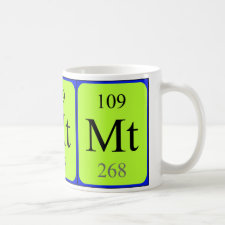
Authors: Zhang YM, Guo LH, Li YJ, He XW, Chen LX, Zhang YK
Article Title: Preparation of molecularly imprinted polymers-functionalized silica nanoparticles for the separation and recognition of aristolochic acids.
Publication date: 2021
Journal: Chinese Journal of Chromatography
Volume: 39
Issue: (10)
Page numbers: 1137-1145.
DOI: 10.3724/SP.J.1123.2021.06024
Alternative URL: https://www.chrom-china.com/EN/10.3724/SP.J.1123.2021.06024
Abstract: Aristolochic acids (AAs), which is commonly found in Aristolochia and Asarum plants, has been widely used in several traditional medicine practices due to their anti-inflammatory, anti-malarial, and anti-hyperglycemic activities. Recently, researchers have found a "decisive link" between liver cancer and aristolochic acid after analyzing a large number of liver cancer samples around the world. Therefore, a highly sensitive and selective method is required for the analysis of AAs in traditional Chinese medicines (TCM). For the determination of AAs in TCM, pretreatment is indispensable because in actual TCM samples, AAs is present in trace amounts and the complex matrix exerts interference. In the past decades, molecularly imprinted polymers (MIPs) have attracted considerable attention as an alternative for the trace analysis in complicated matrices. In this study, MIP-coated SiO2 nanoparticles (SiO2@MIP NPs) was prepared for the determination of aristolochic acid by surface molecular imprinting using aristolochic acid I (AAI ) as the template molecule, 2-vinylpyridine (VPY) as the functional monomer, and ethyleneglycol dimethacrylate (EGDMA) as the cross-linking agent. Core-shell-structure SiO2@MIP NPs were obtained by modifying vinyl groups on the surface of SiO2 NPs, coating MIPs films onto the silica surface via selective polymerization, and final extraction of template AAI and generation of the recognition site. To find a suitable functional monomer for the best imprinting effect, the interaction between the template and the functional monomers, including acrylic acid (AA), methyl acrylic acid (MAA), 2-vinyl pyridine (VPY), acrylamide (AM), and methylacrylamide (MAM) was investigated. Electrostatic interaction between AAI and VPY resulted in the maximum decrease in absorbance of AAI at 250 nm. Therefore, VPY was chosen for the preparation of MIP. The morphological and physical properties of the MIPs were characterized by transmission electron microscopy (TEM), Fourier-transform infrared (FT-IR) spectroscopy, thermogravimetric analysis, and N2 adsorption and desorption surface analysis. TEM images showed that SiO2 NPs were monodispersed with diameter of about 200 nm. The clear core-shell structure of SiO2@MIP NPs was observed, and the thickness of MIPs coating was about 35 nm. The FT-IR spectra of SiO2 NPs, vinyl group modified SiO2 and SiO2@MIP NPs revealed that the vinyl group and organic MIP layer were successfully modified at SiO2 sequentially. The results of thermogravimetric analysis were consistent with the FT-IR data for different SiO2 NPs. The nitrogen gas adsorption-desorption experiments showed that SiO2@MIP NPs and non-imprinted polymer (SiO2@NIP NPs) have the same pore volumes, while the surface area and pore size of MIPs were slightly larger than those of NIPs. Therefore, the difference in adsorption between SiO2@MIP NPs and SiO2@NIP NPs resulted from the imprinted sites on the MIP surface, rather than the difference in their surface areas. The adsorption properties of SiO2@MIP NPs were demonstrated by kinetic, isothermal, and selective adsorption experiments. The results of these experiments displayed that SiO2@MIP NPs reached adsorption equilibrium within a short period (120 s) and possessed a much higher rebinding ability than SiO2@NIP NPs. To verify the selectivity of SiO2@MIP NPs for AAI, three structural analogues (viz. tanshinone IIA, 2-methoxy-5-nitrophenol, and benzoic acid) were selected. The results showed that the binding capacity of SiO2@MIP NPs was much higher than those of these analogues. SiO2@MIP NPs have high adsorption capacity (5.74 mg/g), high imprinting factor (4.9), good selectivity coefficient (2.3-6.6) towards the structural analogues. SiO2@MIP NPs was used as an adsorbent and combined with HPLC for the selective separation of AAI in TCM. The recoveries of Kebia trifoliate samples spiked with three levels of AAI (0.3, 0.5, and 1.0 μg/mL) ranged from 73% to 83%. The results suggested that the proposed SiO2@MIP NPs could be used for selective enrichment of AAI from real complex TCM samples
Template and target information: aristolochic acid, aristolochic acid I, AAI
Author keywords: Surface imprinting technique, silica nanoparticles, aristolochic acids (AAs), Traditional Chinese medicine (TCM)



Join the Society for Molecular Imprinting

New items RSS feed
Sign-up for e-mail updates:
Choose between receiving an occasional newsletter or more frequent e-mail alerts.
Click here to go to the sign-up page.
Is your name elemental or peptidic? Enter your name and find out by clicking either of the buttons below!
Other products you may like:
 MIPdatabase
MIPdatabase









